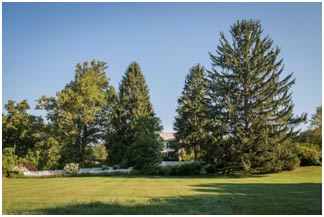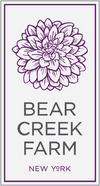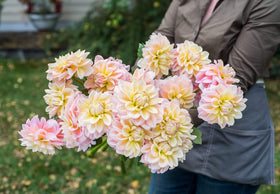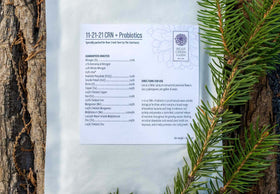Introducing Bear Creek Farm

The hamlet of Stanfordville is one of the small Dutchess County villages clustered around the Taconic Parkway in upstate New York. The first Dutch and French Huguenots colonists arrived in the late Seventeenth Century to farm its fertile Hudson Valley. By the middle of the Nineteenth Century the Industrial Revolution made its way up the Hudson, and, for a time, Stanfordville bustled with cotton and paper mills, wagon wheel and tool factories that harnessed the energy of the region’s many rivers. The revolution, though, proved short-lived, and the town returned to its agricultural origins.
Today Stanfordville is at the center of the farm-to-table, slow food movement that has taken hold in Dutchess County. Sixty-seven percent of the land in Stanford, the town of which tiny Stanfordville is a part, is farmed. The county’s farms teem with diverse crops and livestock: you name it, and there is likely a Dutchess farmer who grows it. Hops, oilseeds, tree nuts all thrive in this rich soil. So do beef and dairy cattle and Heritage hogs.
From the middle of the Nineteenth Century through the middle of the Twentieth, generations of family farmers lived and tended the apple orchards at Bear Creek Farm in Stanfordville. Like too many family farms, however, Bear Creek was left to lie fallow, and eventually the orchard disappeared. The number of Hudson Valley farms fell precipitously in the early 1970s through the 1990s. It was in 1986, during this period of decline, that entrepreneur Debra Kaye purchased the thirty-eight acres and restored the 1850 farmhouse.
At first the farm was a weekend refuge for Debra, as it had been for previous owners; however in 2013 Debra married her partner Steven and made Bear Creek Farm their home. On that glorious September day, the farm had never looked lovelier. Inside and out, the decorations were simple, elegant, natural—and show stopping. Everywhere you looked there were magnificent Bear Creek Farm dinner plate dahlias, the kind of flowers that make your jaw drop. If the bride and groom were the center of attention that day, the dahlias were a close second. Nothing else approached their amazing beauty.
In fact, one wedding guest in particular was captivated by the flowers. A friend of Debra’s, a florist, demanded to know the source of these beauties. When Debra “confessed” she’d grown them, her friend promptly asked her to grow more.
After their marriage Debra and Steven spent more and more time at Bear Creek, slowly transforming the retreat into a working farm. The more Debra thought about her florist-friend’s suggestion, the more appealing the idea of growing dahlias on a large scale appealed to her. She had the land, she had the interest, and she had the support of Steven. Most of all, perhaps, she had the intangible yet critical support of being part of a larger community dedicated to growing things, and growing them right.
A lot of research and a lot of conversations with specialists at Cornell later, Debra planted a trial 500 tubers in the spring of 2014 and sold her first crop of 3,000 dahlias at Hudson Valley farmers’ markets. She was ready to take the next steps, preparing the land for continuous and sustainable use as a flower farm.
Join Debra on the joys and challenges of growing dahlias. Follow the reconstruction of her turn-of-the-century (c. 1900) barn. Learn how to build a root cellar and prepare tubers to survive the winter. Best of all, watch the dahlias grow by checking back here for pictures and updates.








